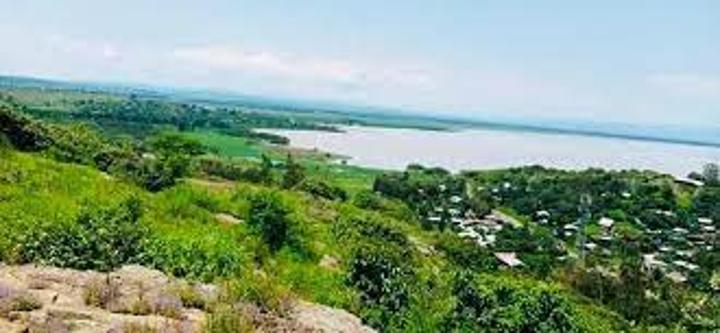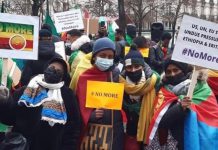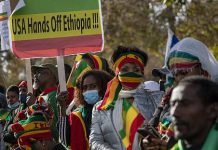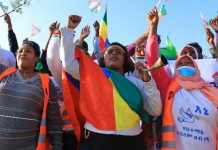Africa-Press-Ethiopia
East Africa’s economy is surging, with annual GDP growth heading in the right direction. In 2019 the region’s economy grew at about 5%. In spite of the Covid-19 pandemic, the region is forecast to grow 3% in 2021 and move back up to 5% by 2022.
Despite economic imbalances across East Africa, Djibouti, Ethiopia, Kenya, Seychelles, Tanzania and Uganda are making promising progress. Eritrea, Somalia and South Sudan, however, very much remain trapped in poverty and conflict.
As one of the fastest-growing economies in Africa, Ethiopia’s GDP has been increasing for the past ten years, reaching $108bn in 2020, up 12% on 2019. This accounted for 4.6% of Africa’s total GDP, an increase from 3.9% in 2019. Growth continued in 2020 despite the Covid-19 pandemic thanks to developments in the construction and services sectors. In 2019 the IMF approved a programme of almost $3bn to support the Ethiopian government’s Homegrown Economic Reform Programme, aimed at addressing macroeconomic imbalances to aid with economic growth. The country’s focus is to become more private sector led.
Ethiopia’s population has been increasing 2–3% year on year for more than 20 years, one of the drivers of increasing inflation in the country. By 2019 inflation reached 15.8%, having fallen below 10% between 2013 and 2016, with food inflation rife. The Ethiopian Economics Association State of Ethiopian Economy 2020/21 report states: “In a country where one-quarter of the population lives under the poverty line, double-digit inflation puts significant strain on the livelihood of people, particularly on wage earners and the retired section of the population whose income can rarely cope with inflation rates. High inflation also raises the real exchange rate, reducing the competitiveness of exports.” In an attempt to combat this, in 2021 the Ethiopian central bank introduced measures aimed at curbing illegal foreign exchange trading and reducing local currency supply.
The country is keen to maintain its progressive momentum, highlighted by the signing of a peace deal with Eritrea in July 2018, ending a war over disputed territories. While on paper this deal moves both countries in the right direction, a lot of work still needs to be done by both countries to open up borders and trade avenues.
Uganda’s GDP has also been increasing, reaching $37.4bn in 2020, and its share of African GDP has also been growing. Inflation, however, has been volatile in the country in part due to fluctuating global commodity prices, with agriculture and food accounting for the majority of exports.
The country has ambition, and its Uganda Vision 2040 strategy aims to transform Ugandan society “from a peasant to a modern and prosperous country within 30 years”, with its oil reserves likely to play a major role in this transformation.
The World Bank noted that “lower oil prices are beneficial to Uganda’s trade balance and real growth outcomes, and they also mean increasing risks to investment plans in the Ugandan oil sector, which was expected to start producing and exporting by 2024/25”. However, despite a lack of financing, in 2021 Total signed an agreement with Uganda and Tanzania for a long-awaited $3.5bn pipeline to export Ugandan crude oil to international markets. If the project goes ahead, Uganda’s economy will reap the benefits.
The 2020 African Economic Outlook report stated that Tanzania was among the world’s ten fastest-growing economies. Its GDP has been growing at a rate of about 6% over the past five years. Inflation has also been falling, down to 3.3% in 2020 thanks to a stabilisation in food prices. In 2020 the country reached lower-middle-income status. Tanzania’s Development Vision 2025 aims to propel the country further to a middle-income country by 2025, using peace, stability and security of citizens as the foundations.
South Sudan, a relatively new country, having gained independence from Sudan in 2011, is heavily reliant on oil to fuel its economic growth. Corruption in the sector is rife, however. A drop in oil prices and increase in food insecurity saw inflation rates in South Sudan reach a new high of 380% in 2016. The country is plagued by economic stagnation and political instability. In 2021 the IMF agreed to give the government an economic stabilisation loan of $174.2m to aid in combating poverty in the country. Elections in South Sudan have been postponed until 2023 to allow time for reforms to be initiated and completed following the signing of a peace agreement in the country in 2018. Little has been achieved to date.
Djibouti’s GDP has been growing year on year since 1997 thanks to its position as a transportation hub in East Africa. About 30% of the world’s shipping passes through the neighbouring strait of Bab el-Mandeb on the way to the Suez Canal. Growth looks set to continue as trade continues to pick up globally.
Somalia has been plagued by economic and political instability following the ongoing civil war the country has faced for the past 30 or so years. GDP per capita in Somalia is the lowest in East Africa at only $309.42 in 2020. Despite its poverty, population rates have been increasing at one of the highest rates in East Africa (2.87% in 2020). The country, so rife with corruption that it tends to deal in US dollars because of counterfeit local currency, is, however, trying to make progress. A new national payments system has been established to aid in transparency and boost trade and investment.
Seychelles, one of the smallest countries in the world, is heavily reliant on tourism. Largely due to its low population it has a comparatively high level of GDP per capita, $11,425 in 2020, the highest in East Africa. The country’s GDP of $1.12bn, however, only contributed 0.05% of Africa’s total GDP in 2020. Covid-19 has had a severe impact on the country due to the way in which it hit the tourism industry. In 2021, Minister for Foreign Affairs and Tourism Sylvestre Radegonde told the Qatar Economic Forum: “It has been a massive challenge [coping with the Covid-19 pandemic], the economy depends still on tourism. We are looking now at diversifying the economy, moving into other sectors such as fisheries.”
African economies are set to benefit from the African Continental Free Trade Area agreement, which will create the largest free trade area in the world by the number of countries participating. Of the 55 African Union states, only Eritrea has not signed up to be part of pact.






